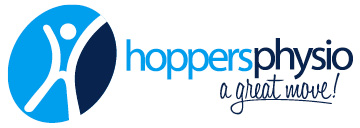X-Ray, CT, MRI? What’s the difference?
So, you’ve been sent for a scan to assist with determining a clearer diagnosis, prognosis, intervention and assessment of your injury or dysfunction – but, why have they chosen that particular scan? Following is an explanation for each type of scan that will hopefully help to clarify why a particular scan has been chosen for your situation.
X-Ray
An X-ray is often used to look at the hard structures within the body – such as the bones or metal implants. This is because the X-rays are able to pass through the soft tissues more easily (you will notice varying shades from black through greys to white, depending on the density of the tissue), whereas denser materials tend to absorb the rays, causing them to appear white on the X-ray film. X-rays are also used to help indicate how much space there is between joints, but will not clearly show the structures (cartilage, ligaments) of the joints. Hence, they can provide an idea of ‘wear-and-tear’, compression and arthritic changes, as well as fractures or deformities that may be present. X-rays can also be used in a number of other situations, such with as detecting bone cancer, lung infections or foreign objects.
CT
Computerized Tomograpy (also referred to as CAT) scans utilize X-ray images taken from different angles followed by computer processing to create cross-sectional images. These images can look at bones, joints, blood vessels, nerves and soft tissues. CT scan images provide more detailed insight than plain X-rays, but less detailed than MRI scans.
MRI
Magnetic Resonance Imaging, as the name suggests, uses a magnetic field, along with radio waves to create much more detailed images of the internal structures, tissues and organs of the body. An MRI machine can create 3-D images that are able to be viewed from many different angles.
There may be contraindications, or reasons that prevent an individual from being able to safely receive a certain type of scan. This may include being pregnant, having kidney or liver problems, implants, prostheses, heart defibrillators or pacemakers. Therefore, it is important to disclose all information relating to past or present health conditions to whomever is referring you for a scan, to ensure that all risk factors can be taken into account when selecting the most appropriate scan.
It is important to note that there are limitations to what scans can show. In certain situations, scans may not show any indication of a cause for pain or dysfunction – certain things will not show up on any type of scan. For example, scans will show tears in the muscle, but not muscular tightness or imbalances.
Don’t despair – your Hoppers physio will certainly be able to detect many of these painful or problematic issues that the scans can’t. They are also highly experienced in analyzing various types of scans, as well as being able to understand the accompanying reports that appear to be written in a foreign language!
If you have been struggling with an undiagnosed physical ailment, contact Hoppers Physio today and schedule an appointment with one of our friendly physiotherapists. At Hoppers Physio in Hoppers Crossing we strive to maximise your health and well-being. Call us today on (03) 9749 5110.
